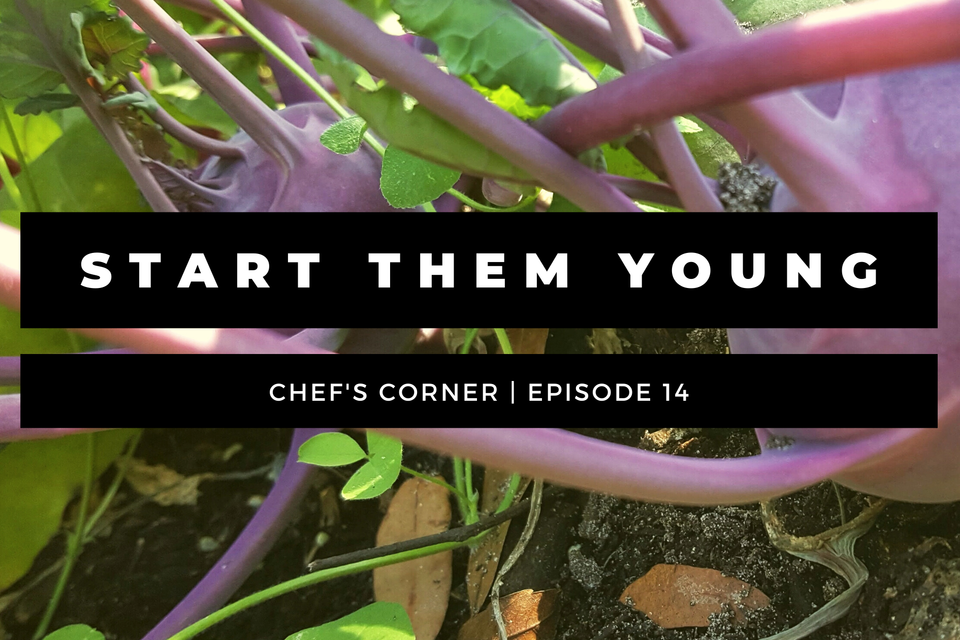By Hari Pulapaka, PhD, WCMC, CEC
February 3, 2022My first restaurant meal in the United States occurred during late August of 1987. Since I was a fresh-off-the-plane international (graduate) student at Virginia Tech, the International Student Office (ISO) matched me with a volunteer community resident so I would become better oriented with my new surroundings — a really good idea. My host, a prominent member of a Blacksburg church, invited me to dinner at a restaurant in nearby Radford. Riding in his Ford Escort, we arrived at a massive all-you-can-eat “Southern restaurant.” Overwhelmed by the multitude of options and considering that I was a lifelong vegetarian at this stage in my life, I opted for what seemed like a safe bet: the salad bar. After I piled my first plate with every recognizable (to me) item, my host seemed amused, and pointed out that I was allowed to return for seconds. His precise words were “In this country, we can have seconds at the dinner table.” I didn’t think much of it at the time, but our plates looked drastically different. Mine was a multicolored cold mess, and his comprised many shades of brown. In retrospect, my host composed a tasty plate of food, whereas I struggled through eating the food on my plate because the flavors really didn’t jive. And how could they? I had piled pickled and raw veggies on top of salad dressings (note the plural), on top of various legumes that were mostly flavorless and decidedly undercooked for my Indian palate — I was used to tadka dal, chana masala, and pav bhaji. It was a stressful evening (and, likely, equally for my host) considering I was self-conscious about my clothes, shoes, accent, etiquette, and general (lack of) knowledge of local food customs. But wasn’t that the point of the experience? To help me assimilate. Judging by my composition, if I was a kid, I too would not eat my veggies.
In my restaurant days, when faced with an order modified with “Child’s Pasta” or “Child’s Chicken,” I understood that I was to not season the dish as I would for an adult. Maybe I could use salt, but not pepper. And for sure, no other aromatic, spice blend or fresh herbs were to be considered. Evidently, a liberal use of butter was expected. The color green on a plate of food apparently turns off many kids and adults. And the last thing I should be serving the youngster should be a vegetable of any kind. Many can attest to my reaction on every such occasion. It was one of frustration and downright indignation. “This is why kids don’t eat their vegetables,” I would rant.
Since those days, I’ve learned to contemplate this state of affairs more reasonably. Can you imagine a world where children desire vegetables? Can you imagine the demand they would generate in schools for more healthful and more plant-forward meals? I am certainly not an expert on discerning the palate of a child. While I do know how to prepare dishes they would enjoy, I also believe that we are doing a disservice to both the vegetables as well as the children with the manner in which they are presented for consumption. They don’t have to be simply steamed. They need not be devoid of flavor. Let’s better understand what savory flavors appeal to a youngster’s palate and let’s complement vegetables with those flavors. Let’s roast, grill, “confit” and purée. Let’s not hide vegetables. Instead, let’s dream of a reality when a child asks to be fed kohlrabi because they know that it’s in season, looks beautiful, and is delicious. And, if the child prefers it steamed, so be it, but let’s not sell short their ability to enjoy adult flavors and diverse cooking techniques. Studies show that children are more likely to emulate an adult they admire and respect. Studies also show that when kids grow their own food, they are more likely to savor and respect its intrinsic value and beauty. Adults are expected to be more thoughtful. Are there not enough adults who eat their veggies? In the United States, certainly not. How does that change? One berbere-spiced kohlrabi gratin at a time?
Local Ingredient of the Week
Kohlrabi
In German, “kohl” refers to cabbage and “rabi” is turnip. According to some food historians, the modern-day kohlrabi was developed in Northern Europe around the late 15th century. In flavor and appearance, this “wild cabbage” certainly resembles the offspring of cabbage and turnip. Fresh kohlrabi is delicious as a raw vegetable with a sprinkle of flaky sea salt. The leaves are fantastic simply sautéed in extra-virgin olive oil, garlic, lemon, and chile flakes. Purple kohlrabi tastes just like green kohlrabi. And, it’s fun to say “Kohlrabi.”
Recipe of the Week
Kohlrabi and Turnip Basil Curry
For years, I would roast these vegetables and season simply with salt and pepper to be served alongside many of our big plates. One day, at the end of dinner service, I made myself a random combination of leftover green curry and some of these roasted vegetables. The idea for this dish may have been born then. Again, one could add a plant-based protein like tofu, but if one must, I recommend using shucked fresh edamame beans instead. Simply fold them into the dish five minutes from the end.Servings: 4
INGREDIENTS3 medium kohlrabi, washed well and cut into wedges
3 medium turnips, washed well and medium diced
1 medium red onion, thinly sliced
1/2 cup green curry concentrate (store-bought or homemade)
1/4 cup low sodium sauce soy1 cup coconut milk
water or vegetable stock, as needed
2 cups fresh basil leaves, keep the stems
1 inch fresh ginger, sliced thinly
3 cloves fresh garlic
1 fresh green chile, like serrano chopped (optional)
extra-virgin olive oil or vegetable oil as needed
granulated sugar, as needed
salt & pepper, in stages and per taste
METHOD1) On a baking sheet, coat the basil stems, kohlrabi, and turnips with some oil and season lightly with salt and pepper. Roast in a 350F oven for 30 minutes.
2) While the vegetables are roasting, in a heavy-bottomed saucepan, sauté the ginger and garlic for 2 minutes before adding the green chile and green curry concentrate.
3) Fry the concentrate for a couple of minutes, add half the basil, and, as soon as it wilts, transfer the sauce to a blender. Process it to a smooth texture.
4) By now, the kohlrabi and turnips will have finished roasting. Discard the basil stems. Return the puréed sauce to a pan, and add the coconut milk, some sugar, salt and pepper, as necessary. Simmer on low.
5) When the sauce is at the desired texture (should coat the back of a spoon) and flavor, fold in the roasted vegetables. Finish by chopping the remaining fresh basil and folding it into the sauce.
6) Serve alongside some steamed jasmine rice or on top of your favorite cooked noodles, preferably a neutral-flavored noodle like rice noodles.Why is the Chef in a Corner?
After spending well over a decade in my little restaurant kitchen fully immersed in getting sh!t done, I’m ready to bust out of my corner.
Each week, I will pass judgment on a segment of food news that may or may not be interesting, shed light on a seasonal (for us) food ingredient or two, and dream up some minutiae about a spice I love and think you should, too.
In true elitist fashion, I will share a recipe with you, because academia is in my blood and academics think everything they do or say is supremely relevant and important.
I am here to champion the worth of food while fighting for flavor and the people who help provide food on our tables. What percentage of Americans eat at the dining table these days? It has been on the decline for the past decade because by many measures, “the kitchen ate the dining room.”
Photo Credit: Hari Pulapaka
About Chef Hari



